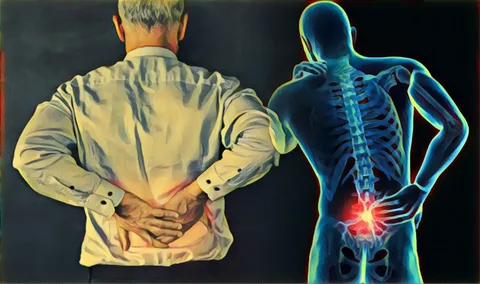
Back pain is a prevalent issue, impacting approximately one in five adults in the United States. While traditional treatments like exercise and physical therapy are often recommended, yet they do not always provide satisfactory relief. Invasive surgeries carry inherent risks, including infection and dependency on opioid pain medications. Moreover, even successful surgery can sometimes limit spine mobility and accelerate degeneration in other areas.
Recognizing all these limitations of current treatment modalities for discogenic low back pain, ZignaGnix stands at the forefront revolutionizing back pain management through innovative stem cell therapy back pain. Our stem cell therapy addresses the underlying cause of degenerative disc disease (DDD) in lower back pain by moderating inflammatory responses and restoring disc cellularity. Although stem cell therapy offers a viable substitute, yet it needs to verified with further clinical research to guarantee its viability and safety.
Mesenchymal stem cells (MSCs) have a remarkable capacity for regeneration, which can be used in stem cell therapy for back pain to identify the underlying cause of the condition.
MSC therapy provides a comprehensive approach to healing for conditions such as facet joint arthritis, herniated discs, and degenerative disc degeneration.
Degenerative Disc Disease:
As discs between the spine’s bones wear down with age, this results in causing pain. This deterioration can result from a variety of factors, including aging, genetic predispositions, and mechanical trauma.
Stem cell therapy for back pain focuses on more than just symptom management. By reducing inflammation, promoting tissue repair, and slowing degeneration, it offers a holistic approach to addressing the underlying causes of pain and discomfort.
When intervertebral discs protrude and compress nearby nerves, the result is often excruciating pain. Stem cells injected into a herniated disc work to regenerate and repair damaged tissue, offering long-term relief and improvement in symptoms.
Patients find considerable pain relief and improved functionality as the injured tissue repairs and regenerates over time, enabling them to resume their regular activities more easily and comfortably.
Aging facet joints are prone to inflammation and deterioration, leading to pain and decreased mobility. Stem cell therapy provides a lasting solution by stimulating tissue repair and easing inflammation within the affected joints.
By promoting natural healing processes, stem cell therapy not only provides relief from discomfort but also improves joint function, enabling patients to enjoy a more active and pain-free lifestyle.
Our procedure at ZignaGenix begins with a thorough evaluation to determine the best source for extracting stem cells, which are typically sourced from either bone marrow or fat cells. Once harvested, these cells undergo a detailed processing phase to create a potent compound rich in growth factors and platelets. This specialized mixture plays a crucial role in promoting tissue regeneration, reducing inflammation, and facilitating the healing process.
With the stem cell compound prepared, our expert medical team carefully administers it into the targeted area, initiating a cascade of regenerative responses within the body. Through this comprehensive approach, we aim to optimize the healing potential and maximize the benefits of stem cell therapy for our patients.
Our clinical trials for stem cell therapy for back pain have shown incredible results. Wanna try? Contact us now.
Is Stem Cell Therapy FDA Approved?
Indeed. Even though stem cell therapy has shown encouraging outcomes, further clinical research is required to properly confirm its safety and viability. However, this novel method to treatment has resulted in significant relief and better quality of life for a number of patients.
Don’t let chronic back pain dictate your life. With ZignaGenix’s cutting-edge stem cell therapy, relief is within reach. Our personalized approach targets the root cause of your pain, offering a natural, long-lasting solution.
Experience the transformative power of regenerative medicine and reclaim your life today.

Ans. The facility, the length of treatment needed, and the specific demands of each patient all affect how much stem cell therapy for back pain costs. At ZignaGenix, we provide individualized treatment regimens made for every patient, guaranteeing the best possible results without sacrificing standards.
Stem cell treatment for back pain cost varies on factors like the type of procedure, the number of injections needed, and additional services provided. At ZignaGenix, we prioritize affordability without compromising on quality. Our team works closely with patients to discuss pricing options and develop customized treatment plans that align with their budget and healthcare goals.
Please feel welcome to contact our friendly staff with any general or medical inquiry. A member of our team will contact you shortly:

Thanks for visiting ZignaGenix, the advanced stem cell therapy clinic, in Mexico, where cutting-edge research combines with attention. Our mission is to change the healthcare landscape by harnessing stem cell therapy’s life-changing benefits.